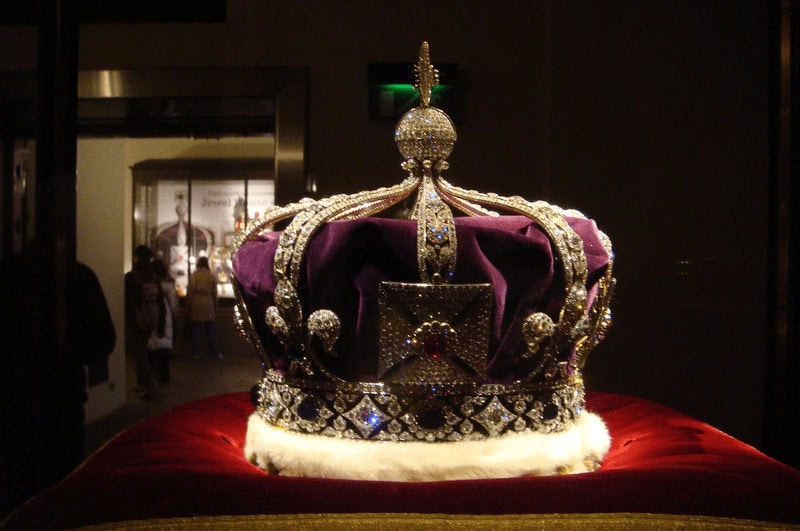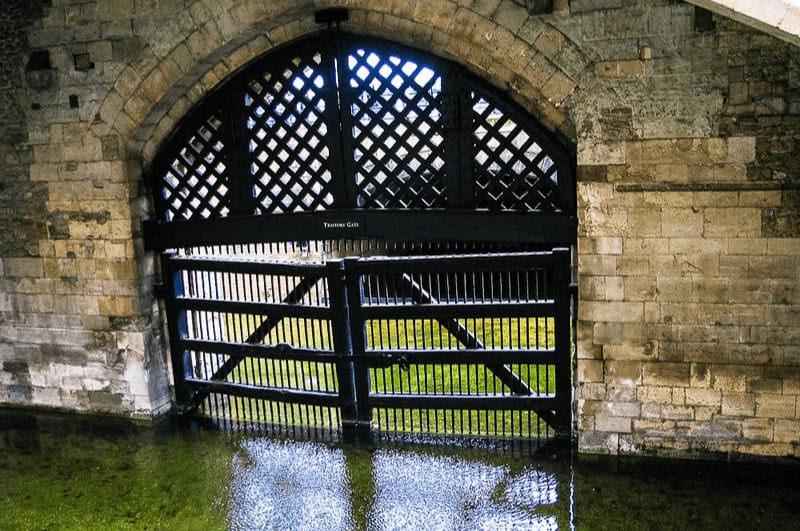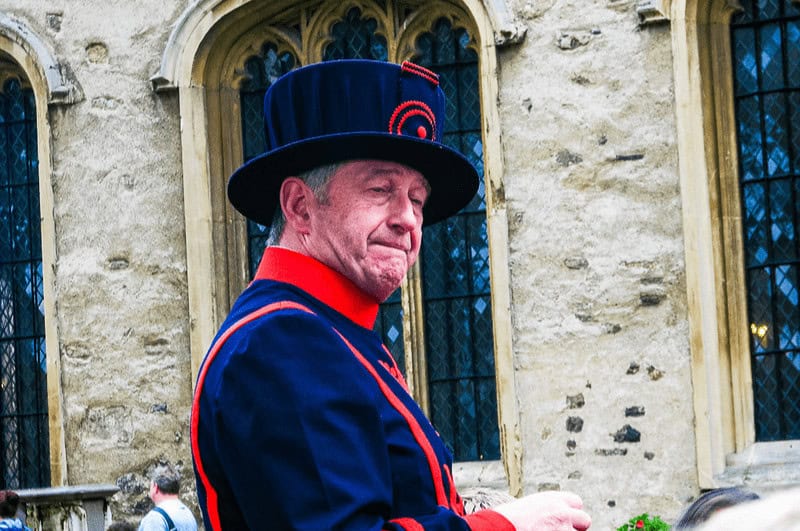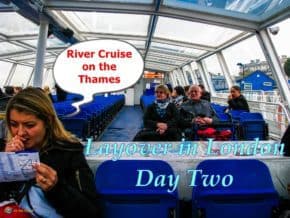Ever since I first visited London as a teenager, I have been captivated by the Tower of London. Its brooding walls, steeped in history and legacy, seem to whisper stories from centuries past. I love to imagine what life must have been like for the people who once lived there — both those who chose to live there and those who were put there by a king or queen.
But the Tower of London is more than just a historical monument. It's also a place of wonder, with plenty to see and explore. In this article, I will tell you about some of the amazing sights that can be found in this historic fortress.
But first, a bit of history:
About the Tower of London
The Tower of London has a long and storied history dating back over 900 years. It was originally built in 1078 AD by William the Conqueror as a fortress to protect London from invaders. And although everyone simply calls it the Tower of London, its true title is His Majesty’s Royal Palace and Fortress.
Since the days of William the Conqueror, different kings and queens added to the building, making it bigger and more complicated with towers, walls, and courtyards, and changing its purpose again and again.
In its lifetime, the Tower of London has been everything from a luxurious royal residence to an arsenal for weaponry storage and protection, a repository for precious artifacts and valuables, and even a royal menagerie for exotic animals.
But during its darker periods, one of the tower’s most infamous roles was as a prison and place of torture and interrogation. Many notable figures in British history were imprisoned and executed at the Tower of London, including Anne Boleyn, Sir Walter Raleigh, Thomas More, and Guy Fawkes. In the last century, it was used to guard the infamous Nazi war criminal Rudolph Hess and witnessed the executions of 12 men for espionage.
And now, the Tower of London is a designated UNESCO World Heritage Site, and one of the most popular tourist destinations in London.
What to see at the Tower of London
The Tower of London is located on the north bank of the River Thames. Therefore, you can get there easily from London Kings Cross station by bus or train.
Because the Tower of London is such a distinctive and historical landmark, there are a wide variety of activities to choose from. Regardless of your interests, this visit will leave you with priceless memories that you will cherish long after you return home. At least, that’s what happened to me!
Here are some of the must-sees at the Tower of London.
1. The White Tower
The White Tower is the oldest building at the Tower of London. The keep was built by William the Conqueror in 1078, on the north bank of the Thames River. Standing 27.5 meters tall and made from white limestone, it was a visible symbol of his power and helped him maintain control over the city of London.
Inside the tower, you will see exhibits of the world-class Royal Armouries collections, including the Line of Kings, which has been on display for over 350 years. Here, you can view unique and extraordinary arms and armor, such as the magnificent royal armor worn by Henry VIII, Charles I, and James II.
You will also be able to see the cramped and uncomfortable conditions of the basement prison cells that held famous prisoners such as Sir Walter Raleigh and Elizabeth I's Lady Jane Grey. Additionally, you will find medieval graffiti left by prisoners and visitors over the centuries, including drawings, inscriptions, and coats of arms.
The White Tower also housed the Royal Mint Museum, where you can learn about the history of coin-making in England and see examples of rare and valuable coins, including the famous 1933 penny.
Finally, you can explore the exquisite Chapel Royal of St John, learn about Henry VIII, and enjoy a tour led by one of the expert warders.
2. Crown Jewels

Being such an impenetrable fortress–even today–it makes sense that the Crown Jewels of Britain are kept there. You'll find the jewels tucked away in a majestic vault known as the Jewel House, where you can admire their glittering beauty firsthand.
The collection consists of 23,578 precious gems—including one of the largest cut diamonds in the world, the Koh-i-Noor diamond—and over 140 royal artifacts.
From the Royal Sceptres and Orb to St Edward’s Crown, each piece here has been carefully crafted over centuries. You'll see things like a royal scepter that dates back to the 15th century and regalia used during royal coronations. You can see how the royal regalia are used during the ceremony and learn more about the symbolism of each object.
These priceless pieces have also seen their fair share of drama, most famously when they were stolen by Colonel Thomas Blood in 1671. If you enjoy espionage stories, the tale of Colonel Blood and the theft of the Crown Jewels is a fun and fascinating one.
If you want to delve deep into the stories behind these stunning artifacts, there are plenty of guided tours on offer at the Tower that will take you through all aspects of jewel-making and design. They’ll even show you how modern technology has helped with preserving them for future generations.
ⓘ TIP: If possible, plan your visit during early morning hours when crowds are smaller and lines shorter – after all, what better way to start your day than exploring one of Europe’s oldest attractions?
3. Traitors' Gate

Traitors' Gate, or Water Lane as it is also known, is the main entrance to the Tower of London. It was originally built by King Edward I in 1277 and later expanded in the 16th century so larger boats could transport prisoners directly into the Tower precincts.
Throughout its history, Traitors’ Gate has witnessed scenes of immense sadness, where prisoners on their way to the Tower would pass under its arch and know that they were never going to leave.
Famous traitors such as Thomas More and Guy Fawkes passed through this gate, along with countless other lesser-known prisoners who were accused of treason or plotting against the crown. This infamous gate served as a reminder to those who crossed the monarchy that their fate would be met with punishment.
Today, you can visit this historical landmark and imagine what it must have been like for those unfortunate souls who had no idea of their fate when they entered its dark depths. You can still see some original features, including the iron grilles that were used to hold prisoners.
4. Armouries and Historic Weapons
If you're interested in military history, the Royal Armouries is one of the best attractions at the Tower of London. Split across three sites: the Tower of London, the Royal Armouries Museum in Leeds, and Fort Nelson, it is the United Kingdom's national collection of arms and armor. It's also the third-oldest museum in the world—only the Capitoline Museum and Vatican Museums are older!
The museum began during the reign of Charles II (1660-85), and visitors had to pay a fee to view his collection. The displays include an impressive array of weapons and armor that date back to the 11th century. There are examples of medieval war machines, swords and axes, helmets and shields, and even suits of armor.
Specially prepared displays include the “Spanish Armoury”—weapons and instruments of torture from the defeated Spanish Armada, as well as the “Line of Kings,” a row of figures representing the kings of England, wearing what was said to be their personal armor.
When you visit, you’ll see the magnificent royal armor worn by Henry VIII, Charles I, and James II. There are also interesting interactive displays that allow you to handle some of the artifacts, giving you a better understanding of how warfare has evolved over time.
5. Yeoman Warders

The Tower of London wouldn’t be complete without its iconic Yeoman Warders, or “Beefeaters” as they are more commonly known. Originally, they were known for their strength and skill with weapons. They have been protecting the Tower and its occupants since 1485, and are responsible for duties such as guarding the Crown Jewels and escorting prisoners to their cells.
The Yeoman Warders are an elite group. All have served at least 22 years in the British military and hold the Long Service and Good Conduct medal. They also have held a senior non-commissioned rank, such as sergeant-major or warrant officer. In total, there are 37 Yeoman Warders, and they live on the grounds of the Tower of London with their families.
In addition to their other duties, Yeoman Warders also serve as guides and tour guides. During your visit, you’ll be able to meet a Yeoman Warder and hear their fascinating stories about life at the Tower of London. Even if you don't take a tour, make sure to ask them questions about the Tower's history—you never know what you might learn!
Taking one of the popular guided tours led by one of these Beefeaters will bring history alive; hear stories about executions that took place within the walls and learn how this ancient fortress has protected Britain throughout centuries. Be sure to look out for some exciting artifacts along your way too!
6. Ceremony of the Keys
One of the Warders' most interesting duties is the Ceremony of the Keys. This is a nightly event, in which a designated warder locks the Tower gates for the night and carries the keys to the Resident Governor.
During this ceremony, the Chief Yeoman Warder locks the outer, Middle, and Byward gates, escorted by four guards from the Tower detachment.
Many people consider it one of the best Tower of London attractions, but you must book ahead. Click here to learn more and reserve your place.
Tips for visiting the Tower of London
Buy tickets in advance: Buying tickets in advance can save you time and ensure that you get the date and time you want. You can purchase tickets on the official Tower of London website or through other ticketing websites. If you plan on visiting other attractions in London, you may want to consider purchasing a combo ticket to save money.
Arrive early: The Tower of London can get very crowded, especially during peak tourist season. Arriving early, when it opens at 9 am, can help you avoid long lines and crowds. This is especially important if you're planning on visiting the Crown Jewels, which can get very busy later in the day.
Take a tour: The Tower of London is a complex site with a lot of history, and taking a guided tour can provide you with a more in-depth understanding of the Tower's significance. Guided tours are available in different languages and can be booked in advance or on the day of your visit.
Be prepared to walk: The Tower of London is a large site, covering 18 acres, so wear comfortable shoes and be prepared to walk around. There are also stairs to climb, so be aware of this if you have mobility issues.
Travel light: The Tower of London can be crowded and has many narrow staircases and uneven surfaces. It’s best to carry your essentials in a small bag or backpack and use a London city luggage storage for larger items.
Visit the Crown Jewels first: The Crown Jewels are the most popular attraction at the Tower of London, so visit them as soon as you arrive. The morning hours are less crowded and you'll avoid the mid-day rush.
Watch the Beefeaters' Ceremony: The Beefeaters' Ceremony takes place every hour and is a fun and informative way to learn about the Tower's history. The Beefeaters are the ceremonial guards of the Tower and have a long history dating back to the 15th century.
Bring a camera: The Tower of London is full of photo opportunities, from the Crown Jewels to the stunning views of the Thames River. Don't forget to bring a camera to capture the memories.
Plan for at least 2-3 hours: There is a lot to see and do at the Tower of London, so plan to spend at least 2-3 hours there. If you're a history buff or want to take your time, you may want to plan for longer. But yes, this is a nice destination if you have a longer airport layover.
Enjoy the view: The Tower of London offers some great views of the city, so be sure to take some time to appreciate the scenery. You can see the Tower Bridge and the Shard from some vantage points, and there are also great views of the Thames River. London
ⓘ TIP: If you’re looking for a nice place to stay in London, take a look at the Park Grand Kensington Hotel. This four-star hotel is conveniently located just 500 feet from Earls Court Tube Station and a mere 5-minute walk from the famous Museum Mile.




Living here now for 2,5 years, but I still haven’t been to the Tower of London! I should really start adding it to my list 🙂
I hope you do, because the Beefeater tour really gives a lot of good insights into English history. Besides, we’ve moved around enough to know that living with regrets about places you wished you’d visited afterwards is no fun.
I loved the sight of the tower too. It was an amazing experience for me
Really, Kuzzok? Why is that?
The first place I visited on my trip to London!
Did you enjoy it, Isaac? What did you like the most about it?
I love taking the visitors to the Tower of London! It’s got such fabulous history and exhibits. Even my son who has zero interest in bling was wowed by the Crown Jewels.
Shobha, you sure know how to take your visitors to the cool places. I’ve been there a few times and always make it a point to see the Crown Jewels. Funny thing is, if I ever wore a REAL gem that big, everyone would assume it was fake.
Such a stunning place and some awesome pics. The architecture is stunning and I would love to check out the changing of the guards!!
Love these blog posts to your grandchildren.
Thanks, Constance. Dan’s having a blast writing to them and sharing his photos … he won’t let me contribute much more than just my proofreading skills!
I found the Tower of London to be really interesting and learned a lot of things that I didn’t know, particularly about the Beefeaters and their role.
So did we, Paula … and here we just thought it was a brand of Gin. 😉
Your photos are so pretty! It is a shame that I didn’t visit this place when I went to London. The walls do look impressive and I will like to see the timbered houses.
London is like that … so much to see, so little time. Thanks for the compliment about the photos, Ruth.